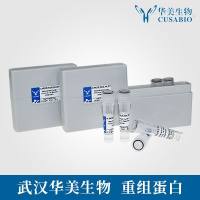In Vitro Generation of Three‐Dimensional Substrate‐Adherent Embryonic Stem Cell–Derived Neural Aggregates for Application in Animal Models of Neurolog
互联网
- Abstract
- Table of Contents
- Materials
- Figures
- Literature Cited
Abstract
In vitro?differentiated embryonic stem (ES) cells comprise a useful source for cell replacement therapy, but the efficiency and safety of a translational approach are highly dependent on optimized protocols for directed differentiation of ES cells into the desired cell types in vitro. Furthermore, the transplantation of three?dimensional ES cell?derived structures instead of a single?cell suspension may improve graft survival and function by providing a beneficial microenvironment for implanted cells. To this end, we have developed a new method to efficiently differentiate mouse ES cells into neural aggregates that consist predominantly (>90%) of postmitotic neurons, neural progenitor cells, and radial glia?like cells. When transplanted into the excitotoxically lesioned striatum of adult mice, these substrate?adherent embryonic stem cell?derived neural aggregates (SENAs) showed significant advantages over transplanted single?cell suspensions of ES cell?derived neural cells, including improved survival of GABAergic neurons, increased cell migration, and significantly decreased risk of teratoma formation. Furthermore, SENAs mediated functional improvement after transplantation into animal models of Parkinson's disease and spinal cord injury. This unit describes in detail how SENAs are efficiently derived from mouse ES cells in vitro and how SENAs are isolated for transplantation. Furthermore, methods are presented for successful implantation of SENAs into animal models of Huntington's disease, Parkinson's disease, and spinal cord injury to study the effects of stem cell?derived neural aggregates in a disease context in vivo. Curr. Protoc. Stem Cell Biol. 21:2D.11.1?2D.11.19. © 2012 by John Wiley & Sons, Inc.
Keywords: embryonic stem cells; neural aggregates; transplantation; regeneration
Table of Contents
- Introduction
- Basic Protocol 1: In Vitro Differentiation of Mouse Embryonic Stem Cells into SENAs
- Alternate Protocol 1: Generation of EBs in Hanging Drops
- Basic Protocol 2: Isolation of SENAs for Transplantation
- Basic Protocol 3: Transplantation of SENAs into an Animal Model of Huntington's Disease
- Basic Protocol 4: Transplantation of SENAs into an Animal Model of Parkinson's Disease
- Basic Protocol 5: Transplantation of SENAs into an Animal Model of Spinal Cord Injury
- Reagents and Solutions
- Commentary
- Literature Cited
- Figures
- Tables
Materials
Basic Protocol 1: In Vitro Differentiation of Mouse Embryonic Stem Cells into SENAs
Materials
Alternate Protocol 1: Generation of EBs in Hanging Drops
Materials
Basic Protocol 2: Isolation of SENAs for Transplantation
Materials
Basic Protocol 3: Transplantation of SENAs into an Animal Model of Huntington's Disease
Basic Protocol 4: Transplantation of SENAs into an Animal Model of Parkinson's Disease
|
Figures
-

Figure 2.D1.1 Schematic presentation of the differentiation of mouse ES cells into substrate‐adherent embryonic stem cell−derived neural aggregates (SENAs). Mouse ES cells expressing enhanced green fluorescent protein (EGFP) under the control of the chicken β‐actin promoter were used for visualization of SENAs after transplantation in mouse models for Parkinson's disease, Huntington's disease, and spinal cord injury. Stage 2 illustrates the hanging drop method (); the same total 4 days are required for the suspension method (). View Image -

Figure 2.D1.2 ES cell−derived SENAs form at stage 4 of differentiation. (A ) Brightfield images show the development of SENAs during the first 15 days after plating (DAP) of neural precursor cells onto poly‐L ‐ornithine‐coated dishes. Neural precursor cells aggregate to form three‐dimensional conglomerates (arrow). (B ) Immunostaining of an EGFP‐positive SENA (green) for β3‐tubulin (red) at 15 DAP. Note the predominant neuronal differentiation. Scale bars: 100 µm (A), 50 µm (B). View Image -

Figure 2.D1.3 Transplantation of SENAs into the striatum and midbrain of adult mice. (A ) Schematic drawing of a mouse brain with sites for injection of SENAs. (B ) EGFP‐positive SENA graft (green) 1 month after transplantation in the host striatum. (C ) EGFP‐positive SENA graft (green) immunostained for the neuronal marker protein NeuN (red). Note the high percentage of NeuN‐positive neurons in the SENA graft. Scale bars: 100 µm (B), 50 µm (C). View Image -

Figure 2.D1.4 Transplantation of SENAs into the compression‐lesioned spinal cord. (A ) Schematic drawing of the spinal cord demonstrating the implanted SENAs (green) both rostral and caudal to the lesion site (gray). (B ) EGFP‐positive SENA grafts (green; asterisks) in the host spinal cord rostral and caudal to the lesion site (arrows). (C ) EGFP‐positive SENA graft immunostained for the neuronal marker protein NeuN (red). A high percentage of NeuN‐positive neurons was found in the SENA grafts. Scale bars: 200 µm (B), 50 µm (C). View Image
Videos
Literature Cited
| Literature Cited | |
| Barberi, T., Klivenyi, P., Calingasan, N.Y., Lee, H., Kawamata, H., Loonam, K., Perrier, A.L., Bruses, J., Rubio, M.E., Topf, N., Tabar, V., Harrison, N.L., Beal, M.F., Moore, M.A., and Studer, L. 2003. Neural subtype specification of fertilization and nuclear transfer embryonic stem cells and application in parkinsonian mice. Nat. Biotechnol. 21:1200‐1207. | |
| Beal, M.F., Kowall, N.W., Ellison, D.W., Mazurek, M.F., Swartz, K.J., and Martin, J.B. 1986. Replication of the neurochemical characteristics of Huntington's disease by quinolinic acid. Nature 321:168‐171. | |
| Bernreuther, C., Dihné, M., Johann, V., Schiefer, J., Cui, Y., Hargus, G., Schmid, J.S., Xu, J., Kosinski, C.M., and Schachner, M. 2006. Neural cell adhesion molecule L1‐transfected embryonic stem cells promote functional recovery after excitotoxic lesion of the mouse striatum. J. Neurosci. 26:11532‐11539. | |
| Bjorklund, L.M., Sanchez‐Pernaute, R., Chung, S., Andersson, T., Chen, I.Y., McNaught, K.S., Brownell, A.L., Jenkins, B.G., Wahlestedt, C., Kim, K.S., and Isacson, O. 2002. Embryonic stem cells develop into functional dopaminergic neurons after transplantation in a Parkinson rat model. Proc. Natl. Acad. Sci. U.S.A. 99:2344‐2349. | |
| Buhnemann, C., Scholz, A., Bernreuther, C., Malik, C.Y., Braun, H., Schachner, M., Reymann, K.G., and Dihné, M. 2006. Neuronal differentiation of transplanted embryonic stem cell‐derived precursors in stroke lesions of adult rats. Brain 129:3238‐3248. | |
| Chen, J., Bernreuther, C., Dihné, M., and Schachner, M. 2005. Cell adhesion molecule l1‐transfected embryonic stem cells with enhanced survival support regrowth of corticospinal tract axons in mice after spinal cord injury. J. Neurotrauma 22:896‐906. | |
| Chung, S., Sonntag, K.C., Andersson, T., Bjorklund, L.M., Park, J.J., Kim, D.W., Kang, U.J., Isacson, O., and Kim, K.S. 2002. Genetic engineering of mouse embryonic stem cells by Nurr1 enhances differentiation and maturation into dopaminergic neurons. Eur. J. Neurosci. 16:1829‐1838. | |
| Cui, Y.F., Hargus, G., Xu, J.C., Schmid, J.S., Shen, Y.Q., Glatzel, M., Schachner, M., and Bernreuther, C. 2010. Embryonic stem cell‐derived L1 overexpressing neural aggregates enhance recovery in Parkinsonian mice. Brain 133:189‐204. | |
| Cui, Y.F., Xu, J., Hargus, G., Jakovcevski, I., Schachner, M., and Bernreuther, C. 2011. Embryonic stem cell‐derived L1 overexpressing neural aggregates enhance recovery after spinal cord injury in mice. PLoS ONE 6:e17126. | |
| Curtis, R., Green, D., Lindsay, R.M., and Wilkin, G.P. 1993. Up‐regulation of GAP‐43 and growth of axons in rat spinal cord after compression injury. J. Neurocytol. 22:51‐64. | |
| Dihné, M., Bernreuther, C., Hagel, C., Wesche, K.O., and Schachner, M. 2006. Embryonic stem cell‐derived neuronally committed precursor cells with reduced teratoma formation after transplantation into the lesioned adult mouse brain. Stem Cells 24:1458‐1466. | |
| Evans, M.J. and Kaufman, M.H. 1981. Establishment in culture of pluripotential cells from mouse embryos. Nature 292:154‐156. | |
| Hargus, G., Cui, Y., Schmid, J.S., Xu, J., Glatzel, M., Schachner, M., and Bernreuther, C. 2008. Tenascin‐R promotes neuronal differentiation of embryonic stem cells and recruitment of host‐derived neural precursor cells after excitotoxic lesion of the mouse striatum. Stem Cells 26:1973‐1984. | |
| Hargus, G., Cooper, O., Deleidi, M., Levy, A., Lee, K., Marlow, E., Yow, A., Soldner, F., Hockemeyer, D., Hallett, P.J., Osborn, T., Jaenisch, R., and Isacson, O. 2010. Differentiated Parkinson patient‐derived induced pluripotent stem cells grow in the adult rodent brain and reduce motor asymmetry in Parkinsonian rats. Proc. Natl. Acad. Sci. U.S.A. 107:15921‐15926. | |
| Illes, S., Theiss, S., Hartung, H.P., Siebler, M., and Dihné, M. 2009. Niche‐dependent development of functional neuronal networks from embryonic stem cell‐derived neural populations. BMC Neurosci. 10:93. | |
| Kawasaki, H., Suemori, H., Mizuseki, K., Watanabe, K., Urano, F., Ichinose, H., Haruta, M., Takahashi, M., Yoshikawa, K., Nishikawa, S., Nakatsuji, N., and Sasai, Y. 2002. Generation of dopaminergic neurons and pigmented epithelia from primate ES cells by stromal cell‐derived inducing activity. Proc. Natl. Acad. Sci. U.S.A. 99:1580‐1585. | |
| Kim, J.H., Auerbach, J.M., Rodriguez‐Gomez, J.A., Velasco, I., Gavin, D., Lumelsky, N., Lee, S.H., Nguyen, J., Sanchez‐Pernaute, R., Bankiewicz, K., and McKay, R. 2002. Dopamine neurons derived from embryonic stem cells function in an animal model of Parkinson's disease. Nature 418:50‐56. | |
| Kolossov, E., Bostani, T., Roell, W., Breitbach, M., Pillekamp, F., Nygren, J.M., Sasse, P., Rubenchik, O., Fries, J.W., Wenzel, D., Geisen, C., Xia, Y., Lu, Z., Duan, Y., Kettenhofen, R., Jovinge, S., Bloch, W., Bohlen, H., Welz, A., Hescheler, J., Jacobsen, S.E., and Fleischmann, B.K. 2006. Engraftment of engineered ES cell‐derived cardiomyocytes but not BM cells restores contractile function to the infarcted myocardium. J. Exp. Med. 203:2315‐2327. | |
| Lagenaur, C., Schachner, M., Solter, D., and Knowles, B. 1982. Monoclonal antibody against SSEA‐1 is specific for a subpopulation of astrocytes in mouse cerebellum. Neurosci. Lett. 31:181‐184. | |
| Langston, J.W., Ballard, P., Tetrud, J.W., and Irwin, I. 1983. Chronic Parkinsonism in humans due to a product of meperidine‐analog synthesis. Science 219:979‐980. | |
| Lee, S.H., Lumelsky, N., Studer, L., Auerbach, J.M., and McKay, R.D. 2000. Efficient generation of midbrain and hindbrain neurons from mouse embryonic stem cells. Nat. Biotechnol. 18:675‐679. | |
| Liberatore, GT, Jackson‐Lewis, V., Vukosavic, S., Mandir, A.S., Vila, M., McAuliffe, V.W., Dawson, V.L., Dawson, T.M., and Przedborski, S. 1999. Inducible nitric oxide synthase stimulates dopaminergic neurodegeneration in the MPTP model of Parkinson disease. Nat. Med. 5:1403‐1409. | |
| Liu, S., Qu, Y., Stewart, T.J., Howard, M.J., Chakrabortty, S., Holekamp, T.F., and McDonald, J.W. 2000. Embryonic stem cells differentiate into oligodendrocytes and myelinate in culture and after spinal cord transplantation. Proc. Natl. Acad. Sci. U.S.A. 97:6126‐6131. | |
| Marchionini, D.M., Collier, T.J., Camargo, M., McGuire, S., Pitzer, M., and Sortwell, C.E. 2003. Interference with anoikis‐induced cell death of dopamine neurons: Implications for augmenting embryonic graft survival in a rat model of Parkinson's disease. J. Comp. Neurol. 464:172‐179. | |
| Martin, G.R. 1981. Isolation of a pluripotent cell line from early mouse embryos cultured in medium conditioned by teratocarcinoma stem cells. Proc. Natl. Acad. Sci. U.S.A. 78:7634‐7638. | |
| Martinat, C., Bacci, J.J., Leete, T., Kim, J., Vanti, W.B., Newman, A.H., Cha, J.H., Gether, U., Wang, H., and Abeliovich, A. 2006. Cooperative transcription activation by Nurr1 and Pitx3 induces embryonic stem cell maturation to the midbrain dopamine neuron phenotype. Proc. Natl. Acad. Sci. U.S.A. 103:2874‐2879. | |
| McDonald, J.W., Liu, X.Z., Qu, Y., Liu, S., Mickey, S.K., Turetsky, D., Gottlieb, D.I., and Choi, D.W. 1999. Transplanted embryonic stem cells survive, differentiate and promote recovery in injured rat spinal cord. Nat. Med. 5:1410‐1412. | |
| Menard, C., Hagege, A.A., Agbulut, O., Barro, M., Morichetti, M.C., Brasselet, C., Bel, A., Messas, E., Bissery, A., Bruneval, P., Desnos, M., Puceat, M., and Menasche, P. 2005. Transplantation of cardiac‐committed mouse embryonic stem cells to infarcted sheep myocardium: A preclinical study. Lancet 366:1005‐1012. | |
| Nagy, A., Rossant, J., Nagy, R., Abramow‐Newerly, W., and Roder, J.C. 1993. Derivation of completely cell culture‐derived mice from early‐passage embryonic stem cells. Proc. Natl. Acad. Sci. U.S.A. 90:8424‐8428. | |
| Okabe, S., Forsberg‐Nilsson, K., Spiro, A.C., Segal, M., and McKay, R.D. 1996. Development of neuronal precursor cells and functional postmitotic neurons from embryonic stem cells in vitro. Mech. Dev. 59:89‐102. | |
| Okabe, M., Ikawa, M., Kominami, K., Nakanishi, T., and Nishimune, Y. 1997. ‘Green mice’ as a source of ubiquitous green cells. FEBS Lett. 407:313‐319. | |
| Pouton, C.W. and Haynes, J.M. 2007. Embryonic stem cells as a source of models for drug discovery. Nat. Rev. Drug Discov. 6:605‐616. | |
| Puceat, M. 2008. Protocols for cardiac differentiation of embryonic stem cells. Methods 45:168‐171. | |
| Rideout, W.M. 3rd, Hochedlinger, K., Kyba, M., Daley, G.Q., and Jaenisch, R. 2002. Correction of a genetic defect by nuclear transplantation and combined cell and gene therapy. Cell 109:17‐27. | |
| Rohwedel, J., Guan, K., and Wobus, A.M. 1999. Induction of cellular differentiation by retinoic acid in vitro. Cells Tissues Organs 165:190‐202. | |
| Schierle, G.S., Hansson, O., Leist, M., Nicotera, P., Widner, H., and Brundin, P. 1999. Caspase inhibition reduces apoptosis and increases survival of nigral transplants. Nat. Med. 5:97‐100. | |
| Soria, B., Roche, E., Berna, G., Leon‐Quinto, T., Reig, J.A., and Martin, F. 2000. Insulin‐secreting cells derived from embryonic stem cells normalize glycemia in streptozotocin‐induced diabetic mice. Diabetes 49:157‐162. | |
| Tropepe, V., Hitoshi, S., Sirard, C., Mak, T.W., Rossant, J., and van der Kooy, D. 2001. Direct neural fate specification from embryonic stem cells: a primitive mammalian neural stem cell stage acquired through a default mechanism. Neuron 30:65‐78. | |
| Wang, Y., Yates, F., Naveiras, O., Ernst, P., and Daley, G.Q. 2005. Embryonic stem cell‐derived hematopoietic stem cells. Proc. Natl. Acad. Sci. U.S.A. 102:19081‐19086. | |
| Wei, L., Cui, L., Snider, B.J., Rivkin, M., Yu, S.S., Lee, C.S., Adams, L.D., Gottlieb, D.I., Johnson, E.M. Jr., Yu, S.P., and Choi, D.W. 2005. Transplantation of embryonic stem cells overexpressing Bcl‐2 promotes functional recovery after transient cerebral ischemia. Neurobiol. Dis. 19:183‐193. | |
| Wernig, M., Zhao, J.P., Pruszak, J., Hedlund, E., Fu, D., Soldner, F., Broccoli, V., Constantine‐Paton, M., Isacson, O., and Jaenisch, R. 2008. Neurons derived from reprogrammed fibroblasts functionally integrate into the fetal brain and improve symptoms of rats with Parkinson's disease. Proc. Natl. Acad. Sci. U.S.A. 105:5856‐5861. | |
| Wichterle, H., Lieberam, I., Porter, J.A., and Jessell, T.M. 2002. Directed differentiation of embryonic stem cells into motor neurons. Cell 110:385‐397. | |
| Wobus, A.M. and Boheler, K.R. 2005. Embryonic stem cells: Prospects for developmental biology and cell therapy. Physiol. Rev. 85:635‐678. |









